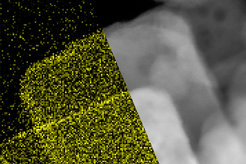New Study reveals how iron enhances catalysts for green hydrogen production
In an important step towards sustainable energy solutions, a recent study published in Energy & Environmental Science reveals progress in the field of green hydrogen production. Led by researchers from the Department of Interface Science at the Fritz Haber Institute (FHI), the study entitled "Role of Fe decoration on the oxygen evolving state of Co3O4 nanocatalysts" uncovers how the addition of iron (Fe) to cobalt oxide (Co3O4) nanocatalysts improves their efficiency and stability in water electrolysis processes.

Water electrolysis, a critical process in the conversion of electrical energy into chemical energy, stands at the forefront of green hydrogen production. The study focuses on enhancing the oxygen evolution reaction (OER), a vital half-reaction in water electrolysis, by optimizing electrode materials. Traditionally reliant on expensive noble metals, the research shifts focus to more abundant and cost-effective transition metal oxides like cobalt and nickel oxides. The understanding of how iron is boosting the activity of these electrocatalysts marks a pivotal advancement.
Despite the known benefits of iron addition, the precise mechanisms at the atomic level remained elusive until now. The collaborative research effort, involving experts from the Fritz-Haber-Institute and the University of Duisburg-Essen, employed advanced electron microscopy and operando spectroscopy methodologies to shed light on these mechanisms. The study reveals that iron not only participates in the electrocatalytic reaction but also induces a beneficial disorder in the near-surface region of the cobalt oxide nanoparticles, enhancing their catalytic activity.
Prof. Dr. Beatriz Roldán Cuenya, Director of the Department of Interface Science at the FHI, emphasizes the importance of understanding the working electrocatalysts under actual reaction conditions. The comprehensive analysis conducted at synchrotron facilities, including Bessy II in Berlin and the European Synchrotron Facility in Grenoble, has been instrumental in identifying key design principles for the next generation of electrode materials.

Dr. Arno Bergmann, group leader from the Department of Interface Science, highlights the broader implications of their findings, suggesting that the identified defect sites and concept could extend to other materials used in alkaline water electrolysis. This study not only advances our understanding of cobalt oxide systems but also contributes to a unified theory of water electrolysis, paving the way for more efficient and sustainable green hydrogen production.
As the world moves towards a carbon-neutral future, the insights gained from this study are expected to play a crucial role in the development of innovative electrode materials. These advancements will help overcome current limitations and bring us closer to achieving the societal and industrial transformation required for a sustainable future.













